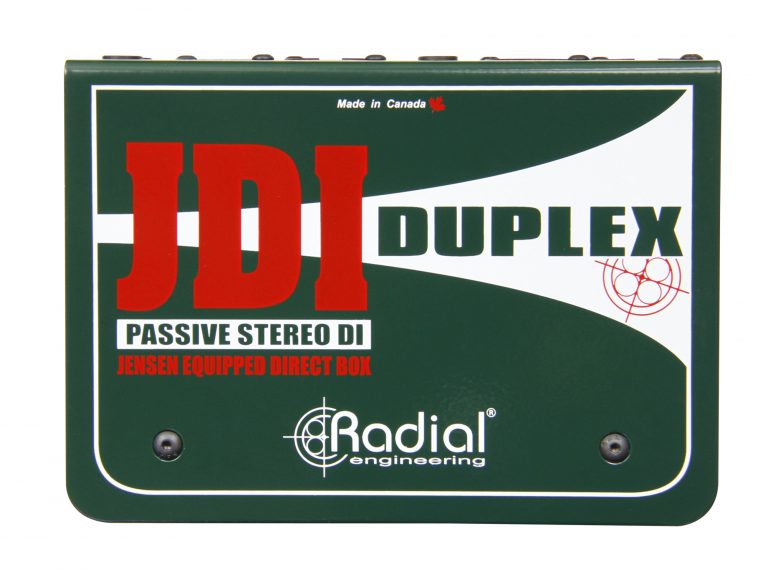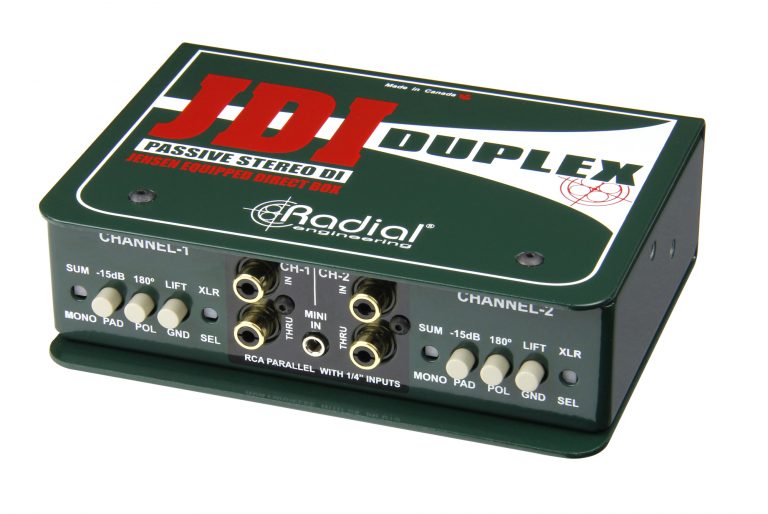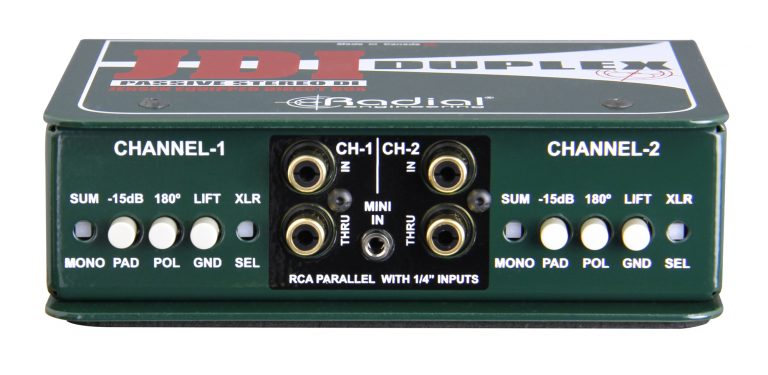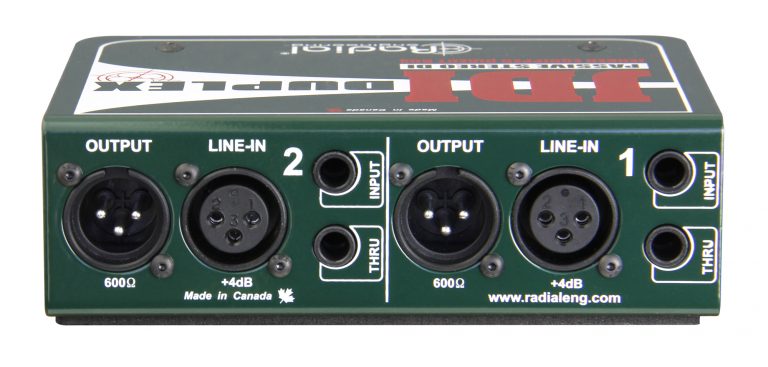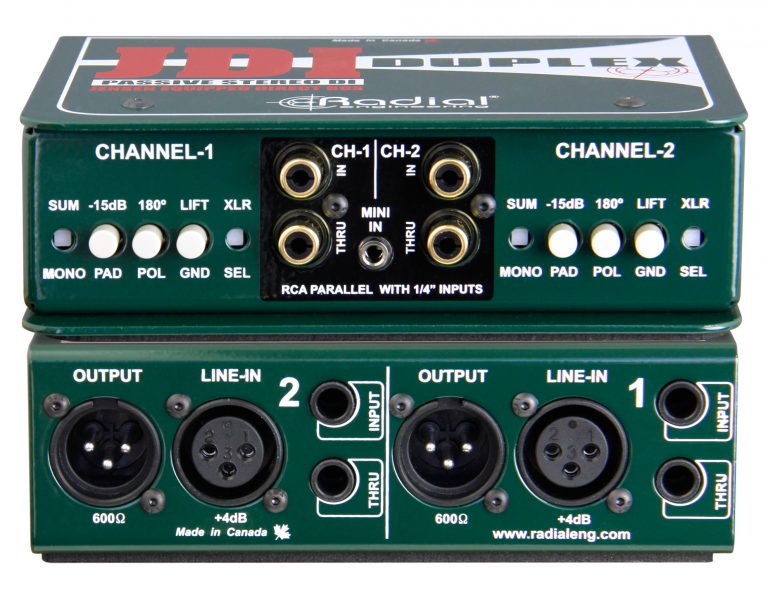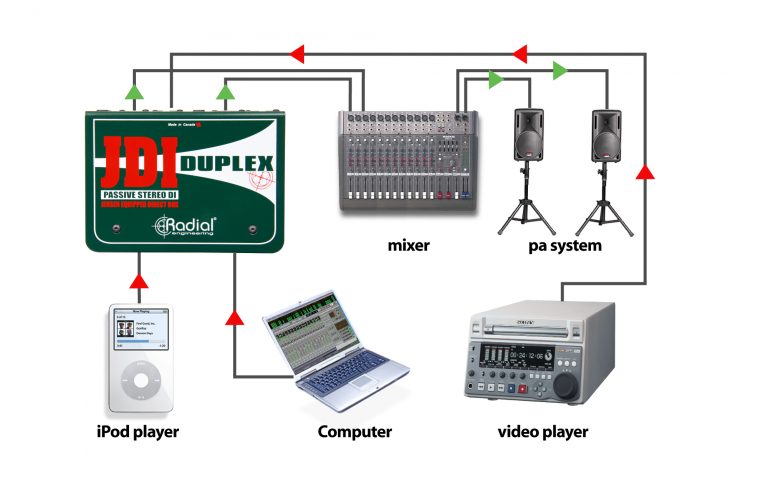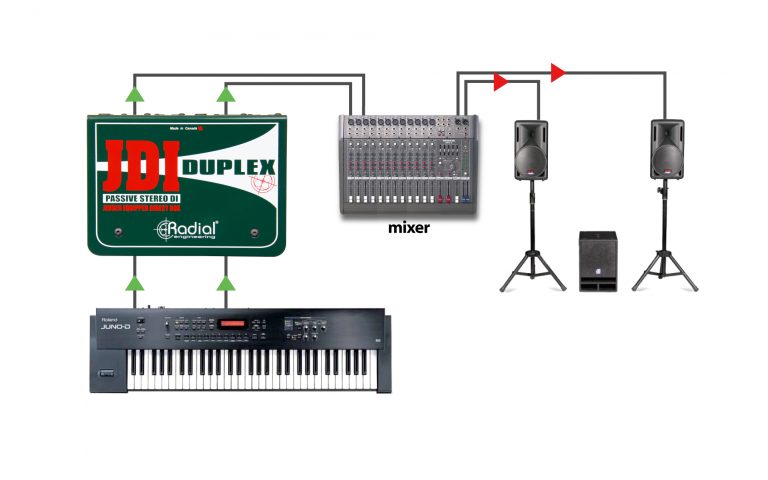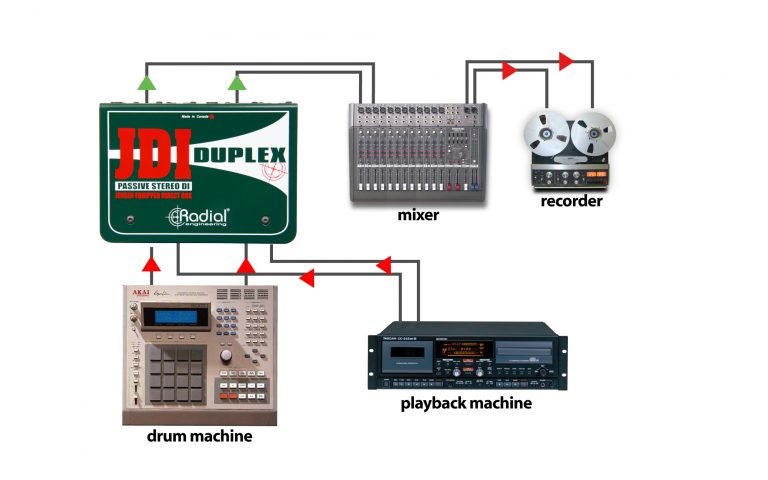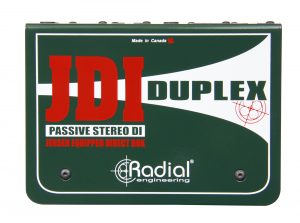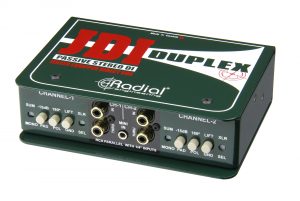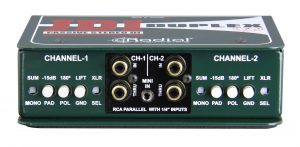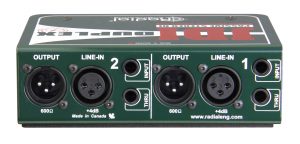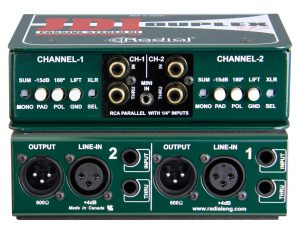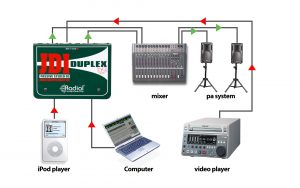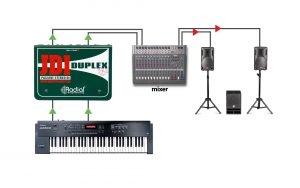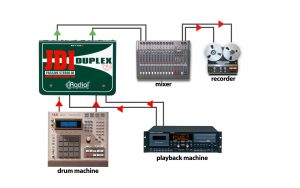If you don't see the question you had in mind here, feel free to enter in the form provided along with your email address so we may send the reply directly to you. Thanks for your participation!
What is the difference between a passive and an active DI?
A passive direct box uses a transformer to convert the electrical signal while an active direct box uses an amplifier circuit called a buffer. Passive boxes have the advantage of providing isolation which can reduce ground hum in systems while active DI boxes tend to have less of a loading effect. The difference can be thought of in terms of comparing a dynamic microphone (passive) to a condenser mic (active).
Is the Duplex like two Radial JDIs in one box?
Yes and then some. Like the JDI, the Duplex employs high performance Jensen® JT-DBE nickel-laminated audio transformers for unmatched signal transfer only here, two are used for stereo. This is augmented with a pair of RCA connectors, a 3.5mm stereo mini jack, a +4dB line level input.
I have heard active DI boxes are better. Is this true?
No. Passive direct boxes have received a bad rap due to some manufacturers using low quality, bad sounding transformers. A high quality passive direct box can be just as good as a high quality active DI box.
What is the benefit of a passive direct box?
A good quality passive direct box can handle more signal with less distortion. Because a transformer can isolate the input from the output and block DC stray DC voltage pollution, they work great at eliminating hum and buzz caused by so called ground loops.
How does the Duplex compare to the Radial ProD2?
The Duplex employs a pair of Jensen transformers plus it has a greater number of features. It is quieter and linear from 10Hz to 40kHz while the ProD2 employs Eclipse transformers and is flat from 20Hz to 18.5kHz. The Duplex is the ultimate choice for the more demanding engineer, particularly in the studio. The ProD2 works tremendously well and is a terrific choice for live use.
Why is the Duplex recommended for digital keyboards?
Digital keyboards tend to have very high output levels, wide frequency response and a huge dynamic range. Because of this, they can easily overload most active circuits. Because the Duplex is passive, it does not distort like an active circuit. It saturates. This naturally rounds out excessive transients to deliver a smoother, warm sounding tone that is reminiscent of older vintage equipment.
Can I use the Duplex with bass or guitar?
Of course. This is the same signal path as used in the famous Radial JDI, only in a stereo format with added features for connectivity.
What happens when I take a stereo source and merge it mono?
The merge function on the Duplex is a resistive summer that mixes two inputs down to one for mono. This saves channels in the PA and can often saves time when sending audio tracks, such as commentary, to various destinations when a mono signal will suffice. This will reduce the signal slightly at the output, but this is easily made up with at the mixing desk.
Can I use the Duplex to isolate consoles or other devices?
This depends on the source. Using the Duplex to isolate two devices to eliminate noise works great! Just keep in mind that the output is mic level. This means that you have to connect the Duplex output to a mic preamp input. If you want to isolate two line level devices, use the Radial Twin-Iso.
Why is the Duplex output not line level?
Direct boxes are always mic level. This lets them be used in snake systems where the gain structure and splitters are all designed to work at the same level. If it were line level, the splitting transformers would distort and the mic lines would likely pick up noise due to cross-talk.
Is there a way to rack-mount a Radial Duplex?
Yes. The new Duplex can be rack mounted using the SA Series Rack Adaptor (Part# R800 9420 10). This accommodates on or two Duplexes in a single 19″ rack space.
What is the sonic difference between the Radial Duplex, ProD2, and the StageBug SB-2?
The transformer in each DI is different. The Duplex employs a Jensen JT-DBE transformer that delivers a 10Hz to 40kHz bandwidth; the ProD2 employs an Eclipse ERT-DB2 transformer that delivers 20Hz to 18.5kHz; the Stage Bug SB-2 employs a more affordable Eclipse ET-DB3 transformer that is flat from 40Hz to 18kHz. The JT-DBE and ET-DB2 have MuMETAL® shields with internal faraday shielding while the ET-DB3 employs a more affordable external copper shield.
I understand that the Duplex went from using a Jensen to an Eclipse ET-DB1, and now back to a Jensen. Can you explain if this is true and the difference?
This is true. Due to short supply from Jensen, we had no choice but to have transformers custom made in order to fulfill demand. The Eclipse used were carefully designed to meet our spec. When Radial purchased Jensen, we injected a significant amount of money into the company to that it could increase production. Because Jensen is now delivering, we have shifted back to using the Jensen JT-DBE.
Will 48V DC phantom power harm the JDI Duplex?
No. The transformers will block the DC without any concern.
Can I use the RCA and 3.5mm jacks at the same time as the ¼” inputs?
Yes, you can use the RCA and 3.5mm inputs in tandem with the ¼” inputs. However, please note that if all of the connections are carrying audio at the same time you may have some of the signals overpowering the others, which may require some careful balancing of the source materials to make things sound good as the inputs on the Duplex are simply wired in parallel with each other.

